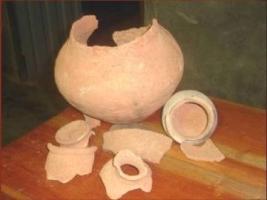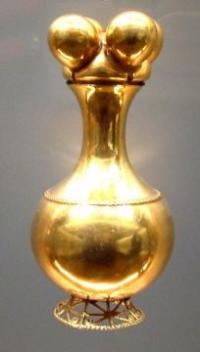Copy Link
Add to Bookmark
Report
HOMEBREW Digest #2279

This file received at Hops.Stanford.EDU 1996/11/19 PST
Homebrew Digest Tuesday, 19 November 1996 Number 2279
FORUM ON BEER, HOMEBREWING, AND RELATED ISSUES
Mike Donald, Digest Janitor-in-training
Thanks to Rob Gardner for making the digest happen!
Contents:
Classic Beer Styles ("Welsch, John")
[none] ()
[none] ()
RE: Carbonation, Dicetyl, Irish Chocolate Stout ((Larry H Carden))
[none] ()
Re: Grits Mash, Classic Beers ("David R. Burley")
[none] ()
[none] ()
[none] ()
[none] ()
[none] ()
Re: Gas in headspace (Kelly Jones)
[none] ()
Classic Beer Style Series ("Welsch, John")
Harvesting blowoff yeast (Rick Dante)
[none] ()
[none] ()
[none] ()
[none] ()
[none] ()
[none] ()
[none] ()
Re: Slurry, Acidify?, Hop finings (Richard Walto)
[none] ()
[none] ()
[none] ()
[none] ()
[none] ()
[none] ()
[none] ()
Johnson Controls thermostat (Alex Santic)
Nitrogen ("John W. Carpenter")
[none] ()
Yield with EasyMasher (Alex Santic)
[none] ()
[none] ()
[none] ()
[none] ()
Classic Beer Series ("Welsch, John")
[none] ()
[none] ()
[none] ()
Canned *goods* (Bart Volentine)
[none] ()
[none] ()
[none] ()
[none] ()
Scheiste!!! ("Pat Babcock")
Belgian Beer festival report (Jason Goldman)
Re: Kegging principles,High Point brewery, RO water (AJN)
Help with stuck ferment (RUst1d?)
re: serving mead ("Curt Speaker")
(Fwd) Your Message has been received ("Pat Babcock")
Re: bale on the aob ("Scott Braker-Abene")
High Mash Temps. & Using Liquid Yeast ("Tom Kelly")
N2/CO2 ratios and chicanery... ("Pat Babcock")
Re: Scheiste! ("Pat Babcock")
Propae cookers ("Jared B Froedtert")
For SUBMISSIONS to be published, send mail to:
homebrew@aob.org
For (UN)SUBSCRIBE requests, send mail to:
homebrew-digest-request@aob.org
and include ONLY subscribe or unsubscribe in the BODY of the message.
Please note that if subscribed via BEER-L, you must unsubscribe by sending
a one line e-mail to listserv@ua1vm.ua.edu that says: UNSUB BEER-L
If your address is changing, please unsubscribe from the old address and
then subscribe from the new address.
If your account is being deleted, please be courteous and unsubscribe first.
For technical problems send e-mail to the Digest Janitor,
homebrew-digest-owner@aob.org.
OTHER HOMEBREW INFORMATION
http://www.aob.org/aob - The AHA's web site.
http://alpha.rollanet.org - "The Brewery" and the Cat's Meow Archives.
info@aob.org - automated e-mail homebrewing information.
ARCHIVES:
At ftp.stanford.edu in /pub/clubs/homebrew/beer via anonymous ftp. Also
http://alpha.rollanet.org on the web and at majordomo@aob.org by e-mail.
COPYRIGHT:
As with all forums such as this one, copyrights are retained by the
original authors. In accordance with the wishes of the members of the
Homebrew Digest, posts to the HBD may NOT be sold or used as part of a
collection that is sold without the original authors' consent. Copies
may ONLY be made available at no charge and should include the current
posting and subscription addresses for the HBD.
----------------------------------------------------------------------
From: "Welsch, John" <A069067@mdcpo102.hb.mdc.com>
Date: Sat, 16 Nov 96 12:35:00 PST
Subject: Classic Beer Styles
I'm no sure that my original post made it, so apologies if this is
redundant.
In # 2277 Tom writes,
...and I found the responses equally entertaining. So I
started thinking, there must be a book out there that describes the
classic beer styles, some commercial examples of each, and how to brew
them.
So, anyone out there know of such a book?
Thanks,
Tom
The AOB has a very good series of books on the classic beer styles . This
set consists of 10 books that sell for about $10 apiece if you but the whole
set. I would recommend them if you want a good overall basic idea of what
the different styles are. Order from the AOB or at your local shop. (No
affiliation......, all disclaimers apply.)
Brew well and often
John Welsch
Strand Brewers
Redondo Beach CA
------------------------------
From:
Date:
Subject: [none]
------------------------------
From:
Date:
Subject: [none]
------------------------------
From: larry.carden@juno.com (Larry H Carden)
Date: Sat, 16 Nov 1996 13:29:01 EST
Subject: RE: Carbonation, Dicetyl, Irish Chocolate Stout
John Penn wrote:
>From: John Penn <john_penn@jhuapl.edu>
>Date: Fri, 15 Nov 1996 15:56:47 +0000
>Subject: Carbonation, Dicetyl, Irish Chocolate Stout
>Thanks AlK for the carbonation experiment. ...
> Al Korz, thanks for the comments on getting dicetyl, I'll have to try
>that. I hope to do a Scotch Ale soon trying for that butterscotch
>flavor I love so much in McEwan's Scotch Ale. I'll use Wyeast 1084
>Irish Stout yeast this time. Made a nice Scottish Ale with Wyeast 1728?
>but I wanted to get more dicetyl so I'll give your aeration during
>fermentation a try.
>...
John, I don't share your love for diacetyl--I can hardly stand to drink
any of the Samuel Smith's (English) ales, for example. The aroma hits me
right in the face before I even take a sip--and I don't feel like I
should be smelling anything reminiscent of popcorn when I'm about to
drink a malt beverage! But I understand that the perception of diacetyl
is genetic--some people don't perceive it at all, whereas many people
(most of my friends) can't pick it out of the flavors, they may just make
comments like "this is smooth". But I do like McEwan's (if not
necessarily the strong, sweet style), and I did not perceive noticeable
diacetyl in the six-pack I tried. Any chance you're perceiving something
other than diacetyl? Or maybe it's subtle enough in that beer that I
don't perceive it as unpleasant...
At any rate, I tryed a Scottish ale recipe earlier this year (I believe I
saw it on the HBD) that came out VERY similar to a McEwan's (but again, I
didn't perceive diacetyl):
>Date: Sat, 04 Nov 95 18:14:00 -0600
>From: alejandro.midence@ssanctum.com (ALEJANDRO MIDENCE)
>Subject: Scotch Ale recipe
>...
>For those that have stuck with me, here's a (proven) rec for the winter
>months.
>
>Alex's scottish ale
>
>8 lbs munton's amber malt extract syrup
>2/3 lb crystal
>1/3 lb roasted barley
>2 oz. east Kent Goldings (10.6 hbu)
>1 oz. goldings ten minutes
>Scottish Ale Yeast
>3/4 c dextros priming
>og: forgot to check
>Fg: they drank it too fast to check
>
>Enjoy!!
>
>Alex
I used:
1.25 lb. Munton's amber dried malt extract
6.60 lb. Munton's amber malt extract syrup (2 cans)
9.25 oz. 60L Crystal
2.75 oz. 120L Crystal
0.25 lb. roasted barley (I was afraid 2/3 lb. would dominate, but next
time I would try it)
2.33 oz. E. Kent Golding pellets 4.5a 90 min.
1.00 oz. E. Kent Golding pellets 4.5a 10 min.
1 pint starter of Wyeast 1728 Scottish
This was a no-fuss recipe that came out very true to the McEwan's style,
I thought. The Scottish yeast left the beer clean, sweet and malty. If I
made this again, I would try the 2/3 lb. roasted barley of the original
recipe, to try for more roasty balance to the maltiness.
By the way, I've made a stout with the 1084 and didn't perceive diacetyl.
Of course, I didn't try, either. ;o)
You could try racking to secondary early to get diacetyl. Most yeast
creates diacetyl but reduces it out, given time to fully ferment the
beer.
Good luck!
------------------------------
From:
Date:
Subject: [none]
------------------------------
From: "David R. Burley" <103164.3202@CompuServe.COM>
Date: 16 Nov 96 11:36:39 EST
Subject: Re: Grits Mash, Classic Beers
Brewsters:
> I want to make a corn-adjuct lager, and was wondering what is the easiest and
> cheapest form to use.
Dave Hinkle asks about using quick Grits in brewing. I always precook even
quick grits and other such "prepared" quick cook cereals to make sure the
starch
is gelatininzed. Instant Cream of Wheat has been treated with Papain to make it
quick cooking. This will affect the protein chain length and open up the starch
granules, but not gelatinize the starch. All of these have possibly been steam
treated, I don't know. Why chance it?
I often make up corn based lagers using grits and do like the big boys do with
no trouble. I do a "goods" mash first in which I boil the grits or other
adjunct, add cold water to get to my lowest rest temperature, (usually 110F for
things like Cream of Wheat), add milled malt ( say 2#) and proceed through a
quick mash. Adding water to this and then the malt I do a staged infusion mash.
This keeps the real mash from becoming viscous and gets the grits goodies
available. You can also do a pseudo-decoction (George DePiro are you
listening?) using this technique with any adjunct ( say Cream of Wheat or even
just malt) staging it at various temperatures and then boil like you would in a
decoction. Using this technique I have never had a stuck or slow sparge and the
efficiency was right up there where it should be.
- ----------------------------------------------------
Tom Lombardo asks if there is a book on classic beer styles and how to make
them.
Tom, you are a marketers dream. There's a whole series of such books called
"Classic Beer Style Series" from Brewer's Publications. C.Papazian's Beer
Companion has a complete listing of the technical characteristics for beer
judging and recipe development.
- ---------------------------------------------------------------------------------
- -------
Keep on brewin'
Dave Burley
Kinnelon, NJ 07405
103164.3202@compuserve.com
------------------------------
From:
Date:
Subject: [none]
------------------------------
From:
Date:
Subject: [none]
------------------------------
From:
Date:
Subject: [none]
------------------------------
From:
Date:
Subject: [none]
------------------------------
From:
Date:
Subject: [none]
------------------------------
From: Kelly Jones <kejones@ptdcs2.intel.com>
Date: Fri, 15 Nov 1996 19:17:42 -0800
Subject: Re: Gas in headspace
Mark Bayer asks:
> regarding carbonation and fill level, i have experienced lower/slower
> carbonation levels with high bottle fills, relative to lower bottle fills
> from the same batch. just my $.02.
>
> one hypothesis behind why this occurs is that pressure builds up more
> quickly in a small headspace than it does in a large one, and the higher
> pressure slows down yeast activity. has this been disproven?
I don't know if it has been disproven experimentally, but it can probably be
ruled out on a physiscal basis. Consider how carbonation occurs: The yeast
produce CO2 in solution, which gradually degasses from the liquid into the
headspace. This continues to happen until the system is in equilibrium, that
is, the tendancy of CO2 to be forced back into solution by the elevated
headspace pressure is exactly balanced by the tendancy of CO2 to degass from
the solution. As the fermentation progresses, the concentration of CO2 in
the liquid increases, causing the equilibrium pressure in the headspace to
rise. But at all points in the process, the equilibrium headspace pressure
is simply a function of the concentration of CO2 in solution. The volume of
the headspace does not factor into this equation at all. The pressure in
the headspace is a function of how fast the fermentation proceeds, not
vice-versa.
Kelly
Hillsboro, OR
------------------------------
From:
Date:
Subject: [none]
------------------------------
From: "Welsch, John" <A069067@mdcpo102.hb.mdc.com>
Date: Fri, 15 Nov 96 19:29:00 PST
Subject: Classic Beer Style Series
Tom writes,
and I found the responses equally entertaining. So I
started thinking, there must be a book out there that describes the
classic beer styles, some commercial examples of each, and how to brew
them.
So, anyone out there know of such a book?
Thanks,
Tom
The AOB has a very good series of books on the classic beer styles . This
set consists of 10 books that sell for about $10 apiece if you but the whole
set. I would recommend them if you want a good overall basic idea of what
the different styles are. Order from the AOB or at your local shop. (No
affiliation......, all disclaimers apply.)
Brew well and often
John Welsch
Strand Brewers
Redondo Beach CA
------------------------------
From: Rick Dante <rdante@pnet.net>
Date: Fri, 15 Nov 1996 18:14:03 -0800 (PST)
Subject: Harvesting blowoff yeast
Has anyone ever harvested the yeast from blowoff collection with good
results? Here's the setup I'm using but I'm not quite brave enough to use
the yeast:
Fermenting in corny kegs with 5/8" tubing into a 1 gallon jug. Jug was
cleaned and sanitized with about a quart of boiling brewing water.
Stuffed the opening with paper towel after putting sanitized blowoff hose
in. Figure the paper towel will keep most nasties out. Wrapped paper
towel and hose with aluminum foil for good measure. Gas escapes and nice
white weizen yeast sits in the bottom of the jug either waiting for the
sewer or waiting for harvesting.
Rick
------------------------------
From:
Date:
Subject: [none]
------------------------------
From:
Date:
Subject: [none]
------------------------------
From:
Date:
Subject: [none]
------------------------------
From:
Date:
Subject: [none]
------------------------------
From:
Date:
Subject: [none]
------------------------------
From:
Date:
Subject: [none]
------------------------------
From:
Date:
Subject: [none]
------------------------------
From: Richard Walto <70410.1112@CompuServe.COM>
Date: 15 Nov 96 21:14:45 EST
Subject: Re: Slurry, Acidify?, Hop finings
Hello friends,
I made a small typo in my bit about hops as finings. To clarify (get it?), it
was the keg with no dry hop
bits that was somewhat hazy even after filtering. But the dry hopped one was
out of sight
clear.
On slurry,
Do you know that I have now seen the word 'slurry' maybe hundreds of times and
nowhere has
anyone ever said where it comes from? If I make a starter, is the stuff on the
bottom a
slurry? And is that somehow more useful in some situations than a starter?
On Acidify,
Do you know that I have now seen the word 'acidify' maybe ten times and
nowhwere
have I noticed
anyone ever saying how to acidify? I would like to hear how people acidify.
Respectfully submitted,
Rick Walton, not Walto.
------------------------------
From:
Date:
Subject: [none]
------------------------------
From:
Date:
Subject: [none]
------------------------------
From:
Date:
Subject: [none]
------------------------------
From:
Date:
Subject: [none]
------------------------------
From:
Date:
Subject: [none]
------------------------------
From:
Date:
Subject: [none]
------------------------------
From:
Date:
Subject: [none]
------------------------------
From: Alex Santic <alex@salley.com>
Date: Mon, 18 Nov 1996 17:12:24 -0500 (EST)
Subject: Johnson Controls thermostat
Guy Gregory asks:
>Johnson Controls makes a fridge controller....cooling only. Has
>anyone used it?
I have two of them and they work well. Sometimes I keep a bottle or
hydrometer jar of water in the fridges in order to check temperature and
it's been pretty much spot-on. These units also treat your compressor well.
Personally I find it a slight pain to deal with positioning the metal air
bulb in a stable manner in the fridge, but it's not too bad.
Alex Santic
NYC
------------------------------
From: "John W. Carpenter" <jwc@med.unc.edu>
Date: Mon, 18 Nov 96 17:33:19 EST
Subject: Nitrogen
Dave B. writes to Pat:
>Michael J. Lewis, author of "STOUT" (Classic Brewing Series), believes
>it is the nitrogen which is responsible for the foam stability. He says
>on p.120
>
>"Nitrogen effectively stabilizes the foam of the draught product because
>as it passes through the small holes in a Guiness tap the stout receives
>a high shear. This causes the nitrogen and carbon dioxide to break out of
>solution to form very tiny bubbles of rather even size which are
>inherently stable. The nitrogen, being insoluble in the beer, then tends
>to stay in the bubbles, rather than leaking through the bubble walls to
>form larger, less stable bubbles or to the atmosphere( which is mostly
>nitrogen) thereby causing the foam to be stable." and it goes on with
>recommendations on how to set up.
First Lewis says the nitrogen and carbon dioxide break out of solution
then turns around and says nitrogen is insoluble in beer, then turns
around and says the bubbles are nitrogen. If the nitrogen is insoluble in
beer how can it "break out" of solution. Something doesn't jive here. Is
nitrogen soluble or not? If not, it couldn't have anything to do with the
foam stability. Don't divers get the bends from nitrogen comming out of
solution in their blood? If nitrogen dissolves in blood and isn't bound to
something else(like a red blood cell), I'd guess it would dissolve in beer
too. What's the real story? Maybe we should put DATELINE on it.
John Carpenter
jwc@med.unc.edu
Chapel Hill, NC
------------------------------
From:
Date:
Subject: [none]
------------------------------
From: Alex Santic <alex@salley.com>
Date: Mon, 18 Nov 1996 17:47:12 -0500 (EST)
Subject: Yield with EasyMasher
Upon describing his EasyMasher woes, Craig Rode remarks:
>HOWEVER....in 2277 Mark Bayer suggests 1 & 1/2 quarts per pound....I've
>been using 1 quart /pound ala Papazian...Could this be the magic
>answer?...Naw, I didn't think so either....I think I'll throw away my
>hydrometer.
Definitely try this. I dunno how your arm can stand mixing such a thick
mash while adding heat. Your chances of getting an even mash temp are slim
unless you whip up a froth and probably dislocate your shoulder. If you
like, you can start with 1 qt/lb for a protein rest if you need one, and
heat 1/2 qt/lb for infusion. This favors the proteolytic enzymes as well
as giving you a head start to the next rest. Sometimes I dough-in cool and
allow a short rest before heating...that may help a little too.
I'll bet you have better results this way (also note that it's in
accordance with Schmidling's instructions). I got 32 pts/lb/gal with a
single decoction yesterday. I get very respectable results with infusion
mashes also. Still being somewhat new to all-grain, I'm always afraid of
the worst but some magic seems to levitate my hydrometer.
Don't go crazy with the gypsum...better to calculate target ppms for ions
and measure mineral salts as appropriate. I treat all the cold water I
need for the brew ahead of time and use it as required.
Alex Santic
NYC
------------------------------
From:
Date:
Subject: [none]
------------------------------
From:
Date:
Subject: [none]
------------------------------
From:
Date:
Subject: [none]
------------------------------
From:
Date:
Subject: [none]
------------------------------
From: "Welsch, John" <A069067@MDCPO102.HB.MDC.COM>
Date: Mon, 18 Nov 96 16:36:00 PST
Subject: Classic Beer Series
Looks like the "none" monster got me, apologies if this is
redundant.
In # 2277 Tom writes,
...and I found the responses equally entertaining. So I
started thinking, there must be a book out there that describes the
classic beer styles, some commercial examples of each, and how to brew
them.
So, anyone out there know of such a book?
Thanks,
Tom
The AOB has a very good series of books on the classic beer styles . This
set consists of 10 books that sell for about $10 apiece if you but the whole
set. I would recommend them if you want a good overall basic idea of what
the different styles are. Order from the AOB or at your local shop. (No
affiliation......, all disclaimers apply.)
Brew well and often
John Welsch
Strand Brewers
Redondo Beach CA
------------------------------
From:
Date:
Subject: [none]
------------------------------
From:
Date:
Subject: [none]
------------------------------
From:
Date:
Subject: [none]
------------------------------
From: Bart Volentine <volentib@silyn.net>
Date: Tue, 19 Nov 1996 02:28:34 +0100
Subject: Canned *goods*
Any idea where I can buy homebrew mixes on the Net? I just bought a =
system that has a ~ 6 quart capacity and I would love to find good =
mixes. I prefer Stout, by the way. TIA. Hope I'm not spammin...
------------------------------
From:
Date:
Subject: [none]
------------------------------
From:
Date:
Subject: [none]
------------------------------
From:
Date:
Subject: [none]
------------------------------
From:
Date:
Subject: [none]
------------------------------
From: "Pat Babcock" <pbabcock@oeonline.com>
Date: Tue, 19 Nov 1996 01:02:52 +0500
Subject: Scheiste!!!
Greetings bertsll! Take me to your lkhshdf...
Typing skills to the wind in that last one! My apologies for all the
"to's" for too's, lost letters, weird spacing, et al. It's late.
Also, note the line "a lot better than assuming zero (as I think
you're impying)." The part that says "(as I think you're impying)"
was inserted by deranged space aliens and is not part of that
paragraph. The jury is instructed to strike that phrase from the
record. Dave is not implying this, as careful reading indicates. Poor
editing is to blame here...
Ah, but were there still a "cancel" feature...
See ya!
Pat Babcock in Canton, Michigan (Western Suburb of Detroit)
pbabcock@oeonline.com URL: http://oeonline.com/~pbabcock/
Let a good beer be the exclamation point at the
end of your day as every sentence requires proper
punctuation.
------------------------------
From: Jason Goldman <jason@purpur.bbn.hp.com>
Date: Tue, 19 Nov 1996 09:36:22 +0100
Subject: Belgian Beer festival report
Here is my trip report from a wonderful visit to the Great Belgian Beer
Festival: 24 Hours of the Belgian Special Beers. What a treat! This was a
great opportunity to taste the wide range of available flavors of beer in
Belgium. The festival was held in Antwerp Belgium for 2 days (Saturday 16
November and Sunday 17 November). The event was put on by the Belgian beer
tasting organization, de Objectieve Bierproevers (OBP). We attended the
first day. There were 152 different beers (emphasis on the "different").
Of these, I was (regrettably) only able to taste about 25 of them. Whew!
Here's how the festival worked: buy a glass, a nice "snifter" style glass;
next, buy some tokens (each token was good for one sample and cost about a
dollar); finally, trade tokens for beer. The 55 breweries were spread out
in a small hall. Every stand had a glass washer and most had bread for
cleansing the palate. Servings were 15cl (about 5 ounces). The program was
organized to list the beers according to style. This was very detailed. In
addition to the beer styles that I was somewhat familiar with, like lambic
and gueze, there were kerstbiers (Christmas beers), honingbiers (honey
beers), etc.
I tasted many quite unusual beers. I'm not really much of an expert on
Belgian beer, but I did get the chance to build on my knowledge. There were
many other beers. Unfortunately, I don't have notes on all of them (you can
imagine how difficult it is to carry around a pad and pencil. I wrote
several notes in the margins of my program. Here's a small sample of what I
tried:
The strangest _looking_ beer was Villers' Paranoia Groen, a "green" beer.
It was somewhat cloudy with a distinct green tint. It was a fairly sweet
beer, reminiscent of a trippel. Quite bizarre to look at, but not bad to
drink!
I met several members of the OBP (hi Johan and Marc;-) who ensured that I
got to try some great beers. The first one they set me up with was Gueze
Drie Fonteinen. This was a very complex beer. The first sip was sour, with
traces of cherry. Later sips revealed stronger cherry, some mustiness, and
sherry like qualities. Really, each sip was like tasting a different beer!
Hommelbier from Van Eecke - This beer was very hoppy, especially given that
most of the other beers were more on the malty side. Good bitterness.
Lindemans' Tea Beer - This was really weird. Strong tea flavor, fairly
floral, too. I've had some similar homebrews. This was not really to my
taste.
Divine from Silly - This beer was one of my favorites. It had a rich
flavor, very malty/sweet. Like many of these beers (not all abbey beers),
it had a yeast character that I associate with the abbey beer style.
Jason Goldman
jason@fc.hp.com
jason@purpur.bbn.hp.com (if mail to the first address bounces)
------------------------------
From: AJN <neitzkea@frc.com>
Date: Tue, 19 Nov 1996 06:34:12 -0500 (EST)
Subject: Re: Kegging principles,High Point brewery, RO water
> From: "David R. Burley" <103164.3202@CompuServe.COM>
>
> Brewsters:
>
> Pat Babcock commented on my comments and said:
>
> > "Standard" lengths and pressures work fairly well for many people
> > since very few of us have special circumstance. Once you step into
> > the realm of specialized systems, you'll understand this all too
> > clearly.
>
>Without a doubt. At what length of line does the beer start flowing backwards?
>
It really isn't the lenght of hose that causes beer to flow backwards, it
is mostly due to over indulgence :)
_________________________________________________________________________
Arnold J. Neitzke Internet Mail: neitzkea@frc.com
------------------------------
From: RUst1d? <rust1d@li.com>
Date: Tue, 19 Nov 1996 09:11:02 -0800
Subject: Help with stuck ferment
> Somehow, the technique of moving to a secondary to revive a stuck
> fermentation. What you are doing is taking the beer away from the
>yeast that is supposed to be doing the job.
Try this to unstick a ferment: Secondary the beer. Pour the
yeast/sediment
from the bottom of the primary into a sanitized jar. Now make up some
starter wort and pitch that to the yeast. When this starter takes off,
add it back to the beer you just removed it from.
- --
John Varady http://www.netaxs.com/~vectorsys/varady/index.html
Boneyard Brewing Co. "The HomeBrew Recipe Calculating Program"
"Ale today, Gone tomorrow."
------------------------------
From: "Curt Speaker" <speaker@safety-1.univsfty.psu.edu>
Date: Tue, 19 Nov 1996 09:46:26 EST
Subject: re: serving mead
Since no one seems to want to tackle this one (except the guy with
the funnelator idea), I'll give it a stab (where is Dick Dunn when
you need him?):
Since mead is much more like wine that beer, I typically serve my
mead in a stemmed wine glass. Sparkling meads look better in tall,
fluted glasses; still meads can go in balloon-type wine glasses.
Small glasses should be used; mead is something to be enjoyed in
moderation (as anyone who has had a mead hangover can tell you - oh
brother!!!).
I typically serve my mead at about 45-55F (my cooler is set at 40F
and I take the mead out and let it set at room temp for 10-15 minutes
before serving).
All of the sensory activites used for beer work well for mead: hold
it up to the light and look at the color and clarity; swirl the glass
and smell the aroma(s); carefully taste it - look for expression of
honey flavor. One of the biggest problems that I have found it that
folks don't use enough honey and typically use champagne yeast - the
result is a dry, alcoholic product without the honey aromas and
flavors that set mead apart from any other beverage.
Hope this helps...
Curt
S.C.U.M.
------------------------------
From: "Pat Babcock" <pbabcock@ford.com>
Date: Tue, 19 Nov 1996 10:24:46 -0500
Subject: (Fwd) Your Message has been received
Eaten by the none-bot...
- --- Forwarded mail from Homebrew@aob.org
To: pbabcock@pvtk01.ba.ford.com
From: Homebrew@aob.org
Subject: Your Message has been received
Date: Mon, 18 Nov 96 19:13:57 GMT
<SNIP>
Greetings beerlings! Take me to your lager...
In HBD 2277, JohnBoy asks whether $25 is worth it to save CO2...
No. Not if you're interested in saving CO2.
Whether you use the shake-rattle-and-roll method or the teensy-bubble-
through-stone method, the same amount of CO2 will is required to reach a set
CO2 volume at a set temperature. The stone should take less time, however -
something more valuable than CO2, IMHO...
See ya!
- -p
pbabcock@oeonline.com
- ---End of forwarded mail from Homebrew@aob.org
------------------------------
From: "Scott Braker-Abene" <sbraker-abene@comark.com>
Date: Tue, 19 Nov 96 09:25:51 CST
Subject: Re: bale on the aob
>From: Jim Liddil <JLIDDIL@AZCC.Arizona.EDU>
>Date: Fri, 15 Nov 1996 16:23:08 -0700 (MST)
>Subject: bale on the aob
>One more time. I think it is time to find an alternative home for
>the hbd.
>The aob has let this {none} stuff go on too long. Also the web site
>and
>calendar are out of date. To summarize my four "lost" posts, the
>whole
>aertion thing is silly and I think Tracy did a good job of covering
>the
>reasons. Make big starters.
>Jim
Here's the deal:
I called the AOB yesterday and was informed that since the leaving of
Shawn the AOB no longer has anything to do with the HBD.
Therefore, they could really care less because all we did was bitch
about the way they screwed it up in the first place.
Face it people the AOB/AHA is floundering and ruining our HBD.
I have talked to Karl Lutzen from the Brewery and he is looking into
some options.
This Janitor in training guy is A JOKE!!! Who has No Clue how to run a
Mailserver.
Let's save the damn HBD before it gets any worse.
There comes a time when you have to take control and scream MUTINY.
THE TIME IS NOW!
-Scott "Mr. Christian, What's all this talk about a MUTINY" Abene
################################################################
# ThE-HoMe-BrEw-RaT #
# Scott Abene <skotrat@wwa.com> #
# http://miso.wwa.com/~skotrat (the Homebrew "Beer Slut" page) #
# OR #
# http://miso.wwa.com/~skotrat/Brew-Rat-Chat/ (Brew-Rat-Chat) #
# "Get off your dead ass and brew" #
# "If beer is liquid bread, maybe bread is solid beer" #
################################################################
------------------------------
From: "Tom Kelly" <tkelly@hologic.com>
Date: Tue, 19 Nov 96 10:35:23 EST
Subject: High Mash Temps. & Using Liquid Yeast
Fellow Brewers:
Recently my assistant mashed 22 lbs of British Pale Malt with 2 lbs
Crystal 40 at 169F for 1 hour. Question 1: What is the predicted
outcome for this brew?
It was supposed to be a 10 gal batch of Holiday (spiced) Ale as in
Papazian. Will it be drinkable? Its fermenting slowly at 58F with
WYEAST American ALE II liquid yeast.
Second question regarding the proper use liquid yeast cultures. I
prepared a started for the above yeast, and propagated the starter a
second time approx. 12 hours before pitching. However the liquid
yeast still seems to start slower and ferment less vigorously than dry
yeast, requiring 12 hours to kick in. Question 2. Does one need
enormous quantities of liquid yeast to achieve the shorter lag times
experienced with dry yeast?
I pitch 3 packages of the dry yeast per 10 gallon batch. I try to
have the wort temp. around 80F at pitching, and I wrap blankets around
the fermenter to keep the heat in (its 58F in my cellar). Dry yeast
usually starts fermenting in 3-6 hours; liquid yeast (2 packs in a 2
pint starter with 2/3 cup pale hopped malt for 12-24 hours) takes at
least 2-3 times longer, despite the fact that it was fermenting the
starter nicely at pitching time.
Thanks for your help.
TLK
------------------------------
From: "Pat Babcock" <pbabcock@ford.com>
Date: Tue, 19 Nov 1996 10:52:44 -0500
Subject: N2/CO2 ratios and chicanery...
Greetings, Beerlings! Take me to your lager...
Further comments on Dave's comments on my commnets on his comments -
specifics from 2278 missed first swing out...
> I thought nitrogen was used in the dispense gas to behave like the old hand
<SNIP>
> Is it because you store your beer at or near room temperature and cool
> before delivery
<SNIP>
Dave, you're not confused. Nitrogen is used for both purposes. The mix for
driving beer in long lines or at high pressure is a different animal than
injecting nitrogen at or near the faucet (I've heard of these beasties, but
haven't seen one...). They are acually not really related.
The pressure used to inject N2 into the stream near the nozzle to knock the
CO2 out of solution would be whatever is perceived to give the desired
results. The effect of this form of sparkler chicanery would be analogous to
the pressure required at the head to drive the beer through a "sparkler" -
or, simply fast enough to generate the desired foam/stillness ratio in the
glass. I might point out here that nitrogen is not required for this purpose
(injection at or near the faucet). Any gas will create the same effect.
In systems where "balance" is desired, the mix is determined for the storage
temperature of the beer, the carbonation pressure at that temperature, and
the driving pressure required (this was in the original post, I believe). You
are correct in your supposition that my inverted mix is due to the storage
temperature of the kegs - and by "storage", I'm referring to the temperature
of the bulk beer while on the system ("tapped"). The typical mix creates a
much smaller partial pressure of CO2 and is suitable for systems having the
beer stored in a cooler while on the system.
This is another case of "standards" and "circumstances". If I blew through
four kegs of beer a night, I could happily drive my system with 35 psig of
CO2 or 35 psig or 30% CO2, 70% N2 and never notice any ill effects (if it sat
a few days under the traditional mix, I may not notice the effects, either).
Since I find it challenging to consume 20 gallons of beer in a short period
of time, I require a mix that maintains the partial pressure of CO2 at my
carbonating level for the storage temperature. When I originally built the
system, I drove it with pure CO2. The beer became more and more carbonated as
it spent time under the head. To the point that the beer had the bitterness
of soda water! Yuch! Imagine what the beer would have been like if it
werestored cold under such pressure!
(By the way, my draught system cools the beer incrementally, much like how a
CF chiller cools your wort. Perhaps part of the confusion will be taken care
of by that clarification. The beer is not cooled before delivery; it is
cooled DURING delivery!)
Most bars don't pay attention to the mix - they either use it, or they don't,
regardless of their circumstances. But they go through beer much faster than
you and I. I might even suggest that their patrons are a bit less
discriminating than you and I as well ;-) And, you might have to wrestle your
gas supplier to the ground to get them to provide you with a custom mix. Mine
insisted that I wanted the traditional mix.
Anyway, I've gone on long enough about this. If I can answer any other
questions regarding my experience with this, fire away!
(Gads, I hate this Unix editor...)
See ya!
Pat Babcock
pbabcock@oeonline.com
------------------------------
From: "Pat Babcock" <pbabcock@ford.com>
Date: Tue, 19 Nov 1996 10:59:02 -0500
Subject: Re: Scheiste!
Greetings, Beerlings! Take me to your lager...
Seems something went awry with the Digest? (Surprise, surprise!) Scheiste!
was to follow a response with the subject He said, I said, he said... in
response to Dave's comments on my comments on his comments. I'll have to
resend this tonight, so the discussion will seem a little disjointed -
assuming anything else even makes it past the none-bot. This is getting
ridiculous.
OK, Jim. Perhaps we should bail. But before we jump: have anywhere for us to
land? I appreciate your frustration, but I also am unaware of any volunteers.
Better to live in a slum than not at all...
See ya!
- -p
pbabcock@oeonline.com
------------------------------
From: "Jared B Froedtert" <froedter@pilot.msu.edu>
Date: Tue, 19 Nov 1996 11:04:01 -0500 (EST)
Subject: Propae cookers
Cookers, cookers, everywhere but not a cooker to brew on.....
I need some advice on which type of burner i should suggest be purchased for me
as a early christmas gift. I've seen the kings cooker advertised, the
cajun cooker, now i want your opinions on these fine products. If any of y'all
who own any of these products or know of an other product similar, could you
please e-mail me with your feelings toward using it. TIA and get those thick
heavy brews ready for those long winter brew nights......
jared froedtert
froedte@pilot.msu.edu
brewmister in the makin'
------------------------------
End of Homebrew Digest #2279
****************************





















